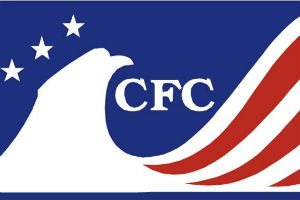The government shutdown, which began on October 1 due to a Congressional spat over the Affordable Care Act, has ground the combined federal campaign (CFC) to a halt. Beyond that, it’s too soon to tell just how much will be lost from the workplace giving campaign for federal employees.
“I am not very clear with how the shutdown will affect the CFC, but that there’s no doubt in my mind that those who need government services the most – the underserved and marginalized – will be direly affected,” said Aaron Dorfman, executive director of National Committee for Responsive Philanthropy (NCRP) in Washington, D.C. Dorfman was a member of the CFC 50 Commission, convened in 2011 to examine and make recommendations to streamline and enhance the half-century old CFC.
The CFC raised $258 million for charities last year, down from $272.7 million in 2011 and a high of $282.6 million in 2009.
The Office of Personnel Management (OPM), which is responsible for the campaign’s oversight, was unavailable for comment. A message on its communications and public liaison line said the agency was unavailable to answer due to a lapse in appropriations, i.e. the shutdown.
Steve Taylor, vice president of public policy for Alexandria, Va.-based United Way Worldwide (UWW), said it’s not so much the loss of donations from the shutdown that will have the most effect. Rather, it will be “the impact of the federal employees’ mentality,” he said. “They’re going to be down, morale is going to be low, because if this (shutdown) extends for any length of time it’s going to hit them hard financially. Most federal employees are not making a ton of money, and most are giving all they can afford to give already.”
United Ways around the country administer most local CFC campaigns: 70 percent, according to a study produced by the Indiana University Lilly Family School of Philanthropy (formerly the Center on Philanthropy). “The disruption, because of the timing of the shutdown, is going to have some modest impact, but the impact on the employees’ state of mind will be the bigger impact,” said Taylor. CFCs run from September 1 to December 15, so administrators were in middle of their campaigns when federal employees stopped getting paid.
Taylor said UWW and its affiliates are preparing for an increase in demand for services from those same government workers who have been a reliable source of revenue for charity. “Some of these federal employees, maybe many, are living paycheck to paycheck,” he said. “You take away their paycheck and they may have trouble paying their rent, their mortgage, utilities, groceries. There’s some irony that this workforce, which has been a dedicated source of contributions to charities in their communities, will suddenly be asking those same charities for help. We owe them help.”
There have been government shutdowns during the presidential administrations of Jimmy Carter, Ronald Reagan, George H.W. Bush and Bill Clinton. The most recent lasted 26 days in 1995, and the longest was 28 days in 1977, according to America’s Charities. CFC revenue increased in all but one of those years.
“Historically, it’s the people who are disadvantaged the most who tend to give the most,” said Kalman Stein, president and CEO of EarthShare in Bethesda, Md., which administers the campaign in the National Capital Region. “They understand the value of a helping hand.” The National Capital Area CFC raised more than $61 million last year, making it the largest single source of unrestricted funds for area charities, according to Stein.
Stein, whose nonprofit also administers the campaign in New York City, said he was encouraged by early indications. “We were very excited,” he said. “We had some real momentum, and hopefully we’ll regain that.” But he said it depends on how long the shutdown lasts. Stein and Steve Delfin, president and CEO of America’s Charities in Chantilly, Va., both think federal employees will receive back pay lost during the shutdown, but there has been no official word. “A lot depends on if pay gets restored,” said Stein.
According to Stein, it’s up to the OPM whether the CFCs could be extended into January to make up for lost time and revenue. “The OPM is on the record saying they’re not in favor of extending the campaign, but that was pre-shutdown,” he said. “I would certainly hope they would consider it.”
Delfin said that his organization expected a 5 percent decrease in funds generated for member charities for this year’s CFC. America’s Charities originally predicted a 2 to 3 percent decrease because of sequestration furloughs, but revised the number once the government shut down.
The CFC is plagued by more problems than a government shutdown, contends Delfin. “(The OPM) seems to view it as something they have to do because it’s required by the executive order of the president,” he said. “OPM has lost track and they look at it as an auditing and compliance function. It’s still vitally important, but it could be so much more and so much better if the OPM could just view it as part and parcel of what they do for federal employees instead of as a segregated activity.”
Like Taylor, Delfin is worried on behalf of federal employees. “We need to be very aware that there will be federal employees looking for services themselves,” he said. “It’s the charities that provide services to families that will see these folks. Federal employees have been great contributors, so let’s make sure we’re looking out for them.”










